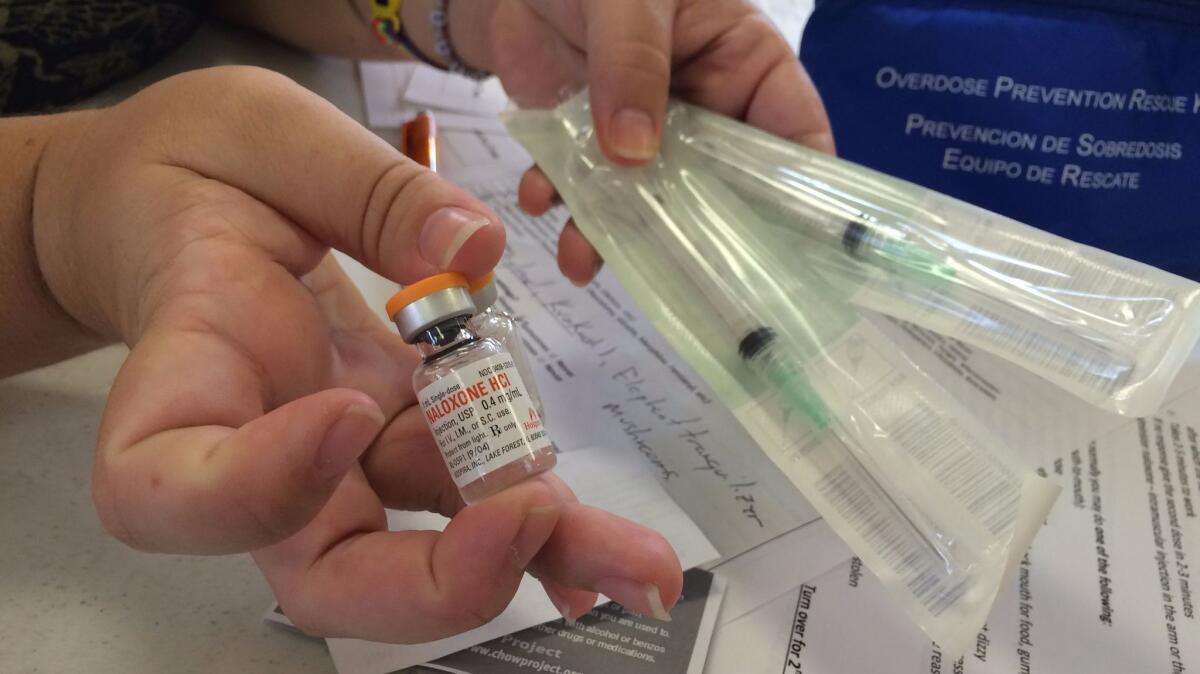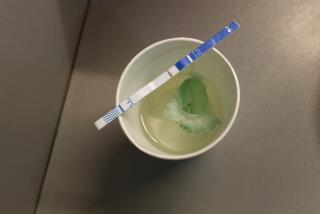How a 5-sentence letter helped fuel the opioid addiction crisis

Experts relate the lax use of prescription opioids with the surge in heroin use. (Sign up for our free video newsletter here http://bit.ly/2n6VKPR)
Close to 200,000 Americans have died by overdosing on prescription painkillers, and a new report traces some of the blame to five simple sentences written nearly 40 years ago.
The sentences, containing just 101 words, appeared in a 1980 issue of the New England Journal of Medicine. They formed a letter to the editor that described a rudimentary analysis of 11,822 hospital patients who took a narcotic painkiller at least once. The vast majority of those patients tolerated the drugs without incident, according to Jane Porter and Dr. Hershel Jick of the Boston Collaborative Drug Surveillance Program.
“There were only four cases of reasonably well documented addiction in patients who had no history of addiction,” Porter and Jick reported. “The addiction was considered major in only one instance.”
In their view, the takeaway was clear: “We conclude that despite widespread use of narcotic drugs in hospitals, the development of addiction is rare in medical patients with no history of addiction.”
That conclusion turned out to be wrong.
Between 1999 and 2015, millions of Americans became addicted to opioid painkillers and more than 183,000 died as a result of taking the prescription drugs. According to the Centers for Disease Control and Prevention, up to 25% of patients who get an opioid prescription to treat noncancer pain wind up struggling with addiction.
“The crisis arose in part because physicians were told that the risk of addiction was low when opioids were prescribed for chronic pain,” according to the authors of a new letter to the editors of the New England Journal of Medicine. The 1980 letter was “widely invoked in support of this claim,” even though the five sentences contained virtually “no evidence” to back it up.
The authors of the 2017 letter — led by Pamela T.M. Leung of the University of Toronto — conducted a bibliometric analysis to determine how many times the 1980 letter was cited by other scholars. The answer: 608 times up through March 30, 2017.
If that number strikes you as high, that’s because it is. Leung and her colleagues also counted the citations for 11 other letters to the editor that were published within four weeks of Porter and Jick’s letter. The median number of citations for those other letters was 11.

But it’s not just the sheer number of times the 1980 letter was cited as proof that prescription painkillers aren’t addictive, Leung and her colleagues wrote. It’s the uncritical — often misleading — way in which its claim has been repeated.
For instance, among the 608 papers that cited the original letter, 81% failed to mention that the patients behind the 4-in-11,882 statistic were being treated in a hospital. Their experience wouldn’t necessarily translate to outpatients who were not under the watchful eyes of doctors and nurses.
Some of the reports that cited the 1980 letter did so rather sloppily. One of the more egregious examples appeared in a 1994 issue of Seminars in Oncology.
“The Boston Drug Surveillance Program reviewed the charts of nearly 12,000 cancer pain patients treated over a decade and found only four of them could be labeled as addicts,” wrote Dr. Michael H. Levy, who recently retired as director of the Pain and Palliative Care Program at Fox Chase Cancer Center in Philadelphia. In fact, Porter and Jick made no mention of what ailed the patients in their sample.
That was hardly the only case of careless attribution. Among the others that stood out to Leung and her colleagues was this 2002 gem from the International Journal of Clinical Practice:
“Fear of addiction may lead to reluctance by the physician to prescribe,” wrote Dr. Sian Iles, an associate professor of radiology at Dalhousie University in Halifax, Nova Scotia, and colleagues. “However, there is no evidence that this occurs when prescribing opioids for pain.”
Nancy Kowal, a nurse practitioner at the University of Massachusetts Memorial Medical Center in Worcester, went even further in a 1999 report in Nursing Economics.
“This pain population with no abuse history is literally at no risk for addiction,” Kowal wrote.
Leung and her colleagues noted an increase in citations of the 1980 letter after OxyContin came on the market in the mid-1990s. Sold by Purdue Pharma, it was a new formulation of the opioid oxycodone that promised to relieve pain for 12 hours. If doctors were concerned about the addiction risks this presented, here was a report in an esteemed medical journal that could put their minds at ease.
The law eventually caught up with Purdue Pharma and three of its top executives. In 2007, they pleaded guilty to criminal charges of misleading regulators, doctors and patients about OxyContin’s addictive qualities.
“Purdue accepted responsibility for the actions some of its employees took prior to 2002, and since that time we have led the industry in developing abuse-deterrent technology, advocating for the use of prescription drug monitoring programs and supporting access to Naloxone — all important components for combating the opioid crisis,” the company said in a statement.
Yet the 1980 letter continues to be cited in the medical literature as evidence that opioid painkillers pose little or no risk to patients.
The liberal reliance on these five sentences helped “shape a narrative that allayed prescribers’ concerns about the risk of addiction associated with long-term opioid therapy,” Leung and her colleagues concluded.
Nearly 2 million Americans are still struggling with the consequences.
To read the article in Spanish, click here
Follow me on Twitter @LATkarenkaplan and “like” Los Angeles Times Science & Health on Facebook.
MORE IN SCIENCE
NASA spacecraft bound for the sun is renamed for the astrophysicist who discovered the solar wind
Being transgender in America may be hazardous to your health, study shows
Another casualty of climate change: A good night’s sleep
UPDATES:
3:35 p.m.: This story has been updated to include a comment from Purdue Pharma, the company that makes OxyContin.
This story was originally published at 2 p.m.







